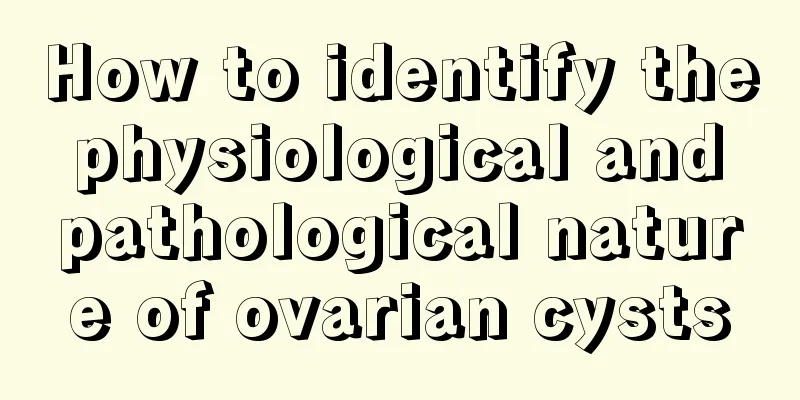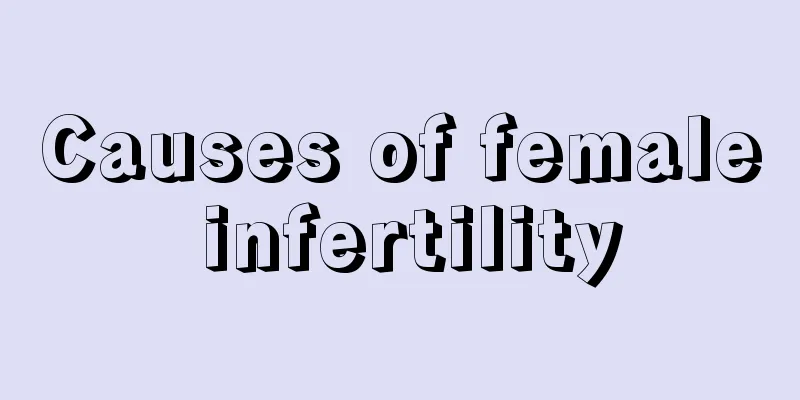How to identify the physiological and pathological nature of ovarian cysts

|
Ovarian cyst is a relatively common gynecological disease. Ovarian cysts are divided into physiological and pathological types. For physiological cysts, women do not need to worry too much, as they can generally resolve on their own. However, if it is a pathological cyst, it generally requires timely and good treatment and good observation. When distinguishing between physiological or pathological cysts, be sure to go to the hospital for diagnosis in time. Ovarian cysts are a common disease among women, which can be divided into physiological (cysts that disappear naturally with changes in the menstrual cycle without treatment) and pathological (cysts formed due to disease). Physiological cysts do not require surgery, but pathological cysts often require surgery to make a clear diagnosis and take appropriate treatment. So how do we distinguish whether a cyst is physiological or pathological? (1) Age: The age of the patient is very important. For prepubertal children or postmenopausal women, the presence of a cyst on the ovary is usually abnormal. If it is solid or cystic-solid, it is likely to be a tumor and requires surgery. But in women who are near puberty or just after menopause, small cysts may also be developing follicles. (2) Nature of the cyst: Ultrasound is very helpful for diagnosis. For cysts smaller than 5 cm in diameter that are anechoic and unpartitioned as shown by ultrasound, the cysts can be observed for 3 months and then repeated after 3 months. For cysts larger than 5 cm in diameter, they can be observed for a period of time. If the cysts persist or abdominal pain is suspected of torsion, surgery is recommended. For patients with dot-like echoes in the cyst and accompanied by dysmenorrhea, it is often considered to be an endometriosis cyst (chocolate cyst). Observation, surgery or drug treatment can be decided based on the size and whether there is a desire to have children. For patients with cystic, solid or combined ascites, or elevated CA125, be careful of the possibility of ovarian malignancy and surgery is recommended as soon as possible. If a physiological cyst is suspected, it can be observed for 1-3 months, or contraceptives can be used to suppress it and observe whether the cyst disappears. Generally, no treatment is required. Surgical treatment is often recommended for pathological cysts, while laparoscopic surgery is often used for benign diseases, which is less traumatic and has a quick recovery. If ovarian cysts persist after menopause, surgical treatment is often recommended. |
<<: Can cervical disease cause infertility?
>>: What are the precautions after cervical biopsy?
Recommend
Does a pregnant woman being scratched by a cat have any effect on the fetus?
What effects will it have on the baby if a pregna...
Can women eat mutton during menstruation?
We all know that women's body structure is ve...
Abdominal pain after transplantation
For women, being able to get pregnant is a very h...
If you experience these 4 symptoms, please stop and rest immediately. No kidding.
I wonder if you have ever had this experience: yo...
How long does it take to recover after minimally invasive surgery for uterine fibroids?
Minimally invasive surgery for uterine fibroids i...
Diet therapy for breast hyperplasia and nodules, these three recipes should be kept well
If breast hyperplasia is found during examination...
What sex position is easy to conceive?
Many friends think that married life is a very pr...
I am about to leave the confinement period and I feel a slight pain in my lower abdomen
After the confinement period, the body is very se...
Beware of 5 expressions of women's private parts
Vulvar and vaginal inflammation is the most commo...
Well-known actor dies at the age of 42! This type of cancer is easily misdiagnosed and missed, so middle-aged and elderly people should be especially vigilant!
Recently, 42-year-old Hollywood actor Adan Canto ...
I am lactose intolerant to milk, so what about oat milk?
Milk is a drink called white blood. As a natural ...
What should girls pay attention to when swimming?
In summer, many people usually choose to go swimm...
Leucorrhea is sticky like glue
Sometimes the leucorrhea is very sticky like glue...
How long does it take for the uterus to return to its original position after cesarean section?
The uterus is the part of a woman's body wher...
Is there any benefit from practicing yoga after childbirth?
Every mother works very hard after ten months of ...









